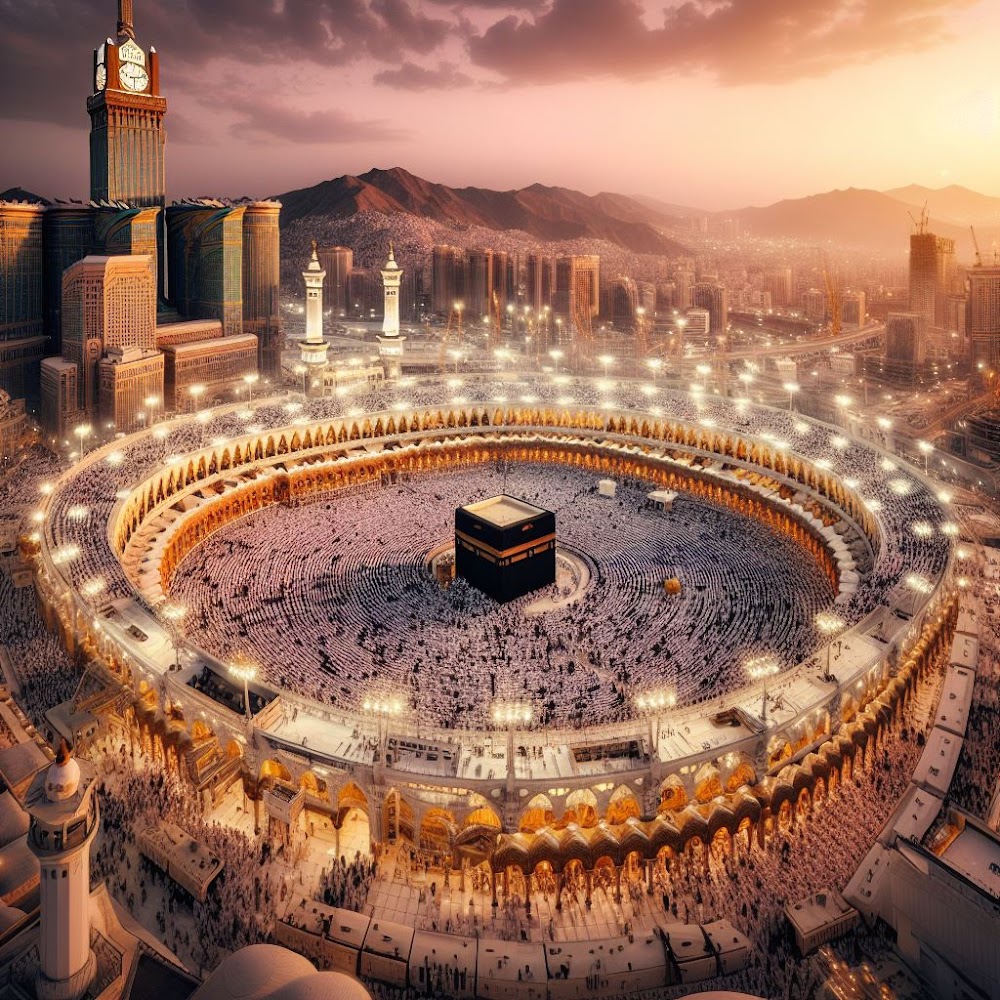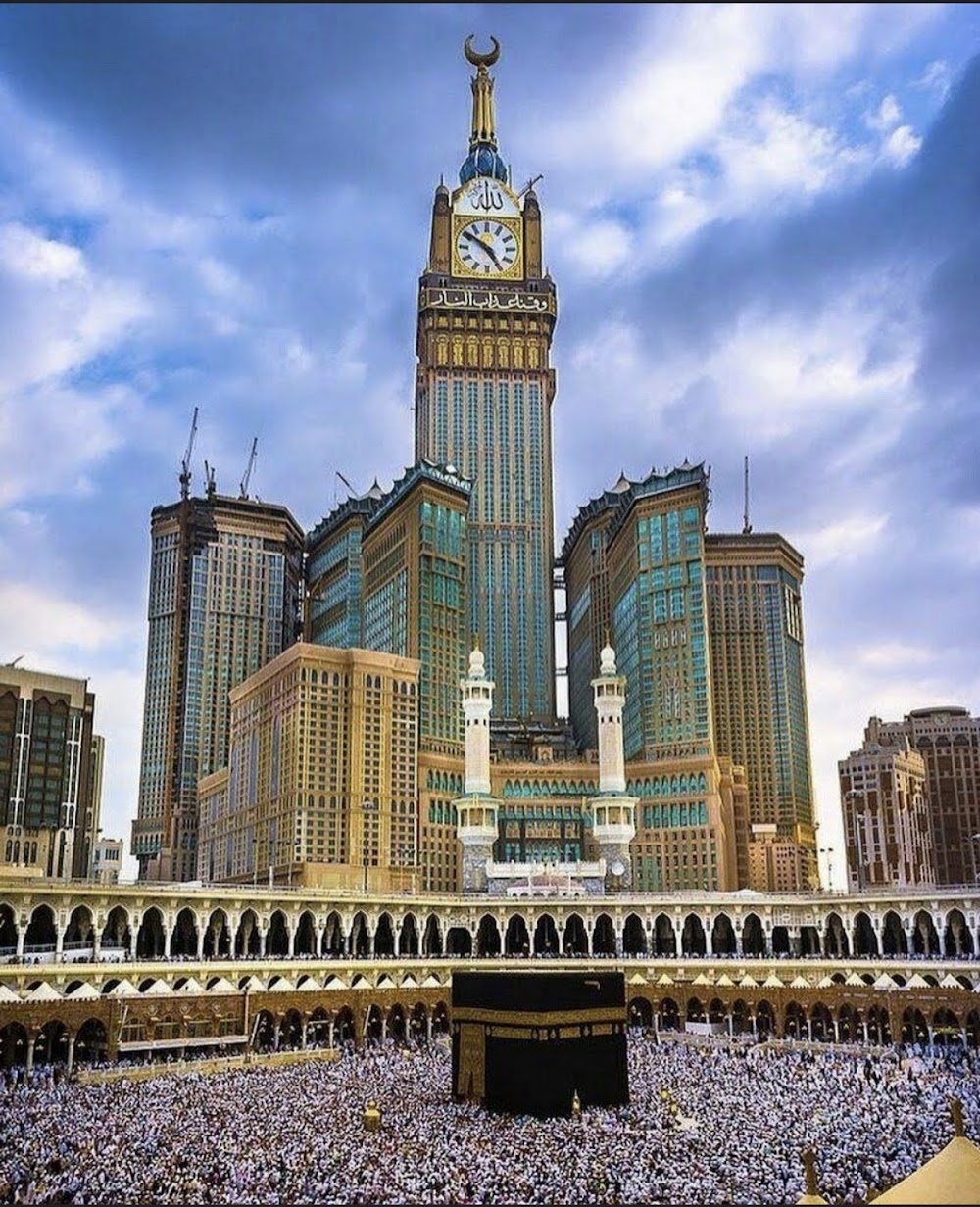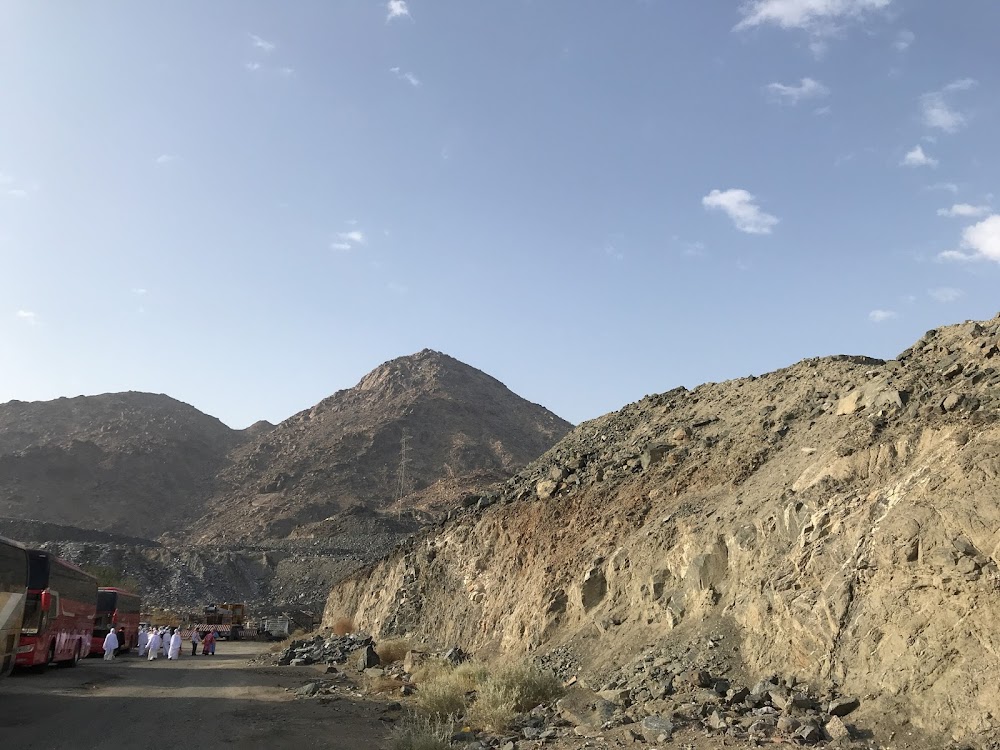Al-Kaaba (الكعبة)
Related Places
Overview
The Kaaba, located in the heart of Makkah, Saudi Arabia, holds profound significance for Muslims around the globe. Its origins, steeped in Islamic tradition, trace back to the Prophet Ibrahim (Abraham) and his son Ismail (Ishmael), who were commanded by Allah to construct a sacred place of worship dedicated to the one true God. This historical link adds an immense spiritual value to this iconic structure.
The construction of the Kaaba utilized local materials, particularly stones from the nearby hills. Initially built in a rectangular shape, the dimensions of the Kaaba have varied over time due to numerous reconstructions. In its early days, the Kaaba lacked a roof and featured an irregular shape, reflecting the technological limitations of that era.
Over the centuries, the Kaaba has undergone several reconstructions, often due to natural disasters and the immense number of pilgrims visiting the site. Before the advent of Islam, the Quraysh tribe, which held guardianship over the Kaaba, undertook significant renovations around 605 AD. This reconstruction introduced a roofed structure, setting a precedent for future modifications just five years before Prophet Muhammad received his first revelation.
With the rise of Islam, the Kaaba emerged as the focal point of Muslim worship. Today, Muslims from every corner of the world face the Kaaba during their daily prayers, and it represents the ultimate destination for the Hajj pilgrimage—one of the Five Pillars of Islam.
Significant structural changes to the Kaaba occurred during the reign of the second Islamic caliph, Umar ibn al-Khattab, and later under Umayyad caliph Abd al-Malik ibn Marwan. These renovations aimed to strengthen the foundations and walls against flooding, introducing a new exterior adorned with Meccan black stones, and enhancing the interior for greater stability.
Throughout history, various Islamic rulers and dynasties, including the Abbasids and Ottomans, have taken on the responsibility of maintaining and upgrading the Kaaba. These efforts included regular repairs, the installation of water channels to prevent flood damage, and the addition of new doors and roofing, ensuring the structure's preservation amid a growing number of pilgrims.
One of the most prominent features of the Kaaba is the Kiswah, a black silk and gold-embroidered cloth that drapes elegantly over it. This tradition of covering the Kaaba dates back to early Islamic history, with a new Kiswah crafted and placed over the structure annually. Made from silk imported from Italy and Switzerland, the intricate gold and silver threads are skillfully woven by craftsmen in Saudi Arabia, making each Kiswah a masterpiece of art.
Another central element of the Kaaba is the Hajar al-Aswad, or the Black Stone, set into one corner of the structure. Islamic tradition holds that this stone was gifted by the angel Jibril (Gabriel) to Ibrahim, serving as a guiding marker during the Kaaba's construction. Over time, the stone has suffered breakage and has been mended, currently encased in a protective silver frame.
Inside the Kaaba, visitors would find three pillars supporting the ceiling, with the floor made of exquisite marble. The interior walls are adorned with marble halfway to the roof, while a green cloth drapes above. Unlike its unadorned exterior, the interior is remarkably decorative, though it remains closed to the general public for most of the time.
Throughout its storied history, the Kaaba has stood resilient as a symbol of unity and devotion for Muslims worldwide. Despite numerous reconstructions and renovations aimed at fortifying and beautifying the structure, the essence of the Kaaba remains unchanged: it is the house of Allah and a beacon of faith that continues to inspire millions across the globe.







